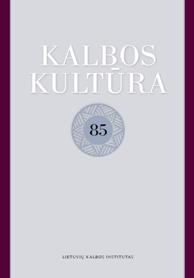Keli probleminiai rašybos ir skyrybos ženklų vartojimo atvejai
Some problematic cases of the usage of orthography and punctuation marks
Author(s): Ona Laima GudzinevičiūtėSubject(s): Baltic Languages
Published by: Lietuvių Kalbos Institutas
Keywords: literacy; orthography recommendations; text typing on the computer;
Summary/Abstract: In addition to letters and figures there are various symbols used in texts which provide additional information. Punctuation marks have different functions in the written language as well.The aim of this article is to discuss a few problematic cases of orthography and punctuation and the usage of some less frequently used symbols such as paired, repeated, double and single marks, apostrophes, the variety of brackets, tildes, syllable hyphens, dashes and hyphens, slashes, spaces between characters, etc.Linguists have not sufficiently clearly defined theoretically or suggested practically how to use some characters which were brought up-to-date by the computerization of the society. This article deals with cases of orthography and punctuation which have been discussed or mentioned in many publications of language codification, although there is a lack of precise, specific and authoritative recommendations which would help to achieve a better quality of text prepared on the computer.In handwritten text it is quite difficult to distinguish by eye a hyphen (orthographic mark) and a dash (punctuation mark) and it doesn’t matter much how big the space between words is. When typing a text on the computer there are additional instructions according to the requirements of computer literacy.Scientific and codifying publications do not define precisely some cases of orthography and punctuation as well as the usage of particular signs which sometimes causes confusion and provokes unnecessary discussions. Many computer specialists first of all follow the logic which is the basis of science. Users of the language ought to know how it should be and why it should be that way; then they would be able to put the theory for which the specialists are responsible into practice more easily. A lack of knowledge brings amateurish and evasive solutions,for instance changing font style instead of using quotation marks. This is not such an evil, but it complicates communication and a free, simplified usage (and simplified language) becomes established most obviously in the electronic media.
Journal: Bendrinė kalba (iki 2014 metų – Kalbos kultūra)
- Issue Year: 2012
- Issue No: 85
- Page Range: 121-135
- Page Count: 15
- Language: Lithuanian

